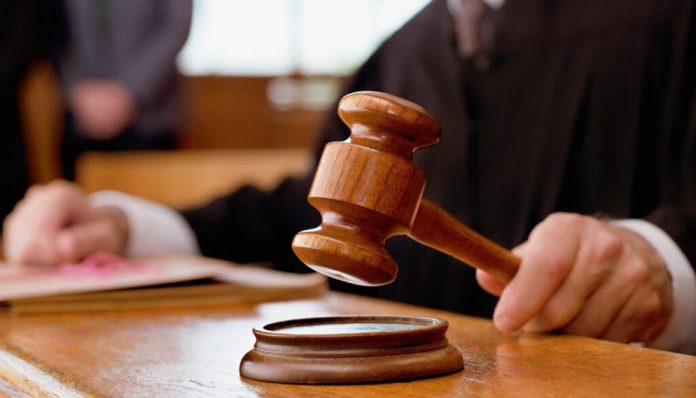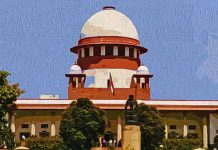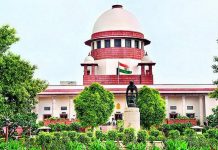This article is written by Gursimran Kaur Bakshi. This article will examine the recent trends and patterns in the appointment of judges to the Supreme Court.
Table of Contents
Background
Recently, the President of India, Ram Nath Kovind gave his assent to the appointment of nine judges to the Supreme Court of India (SC) as per Article 124(2) of the Constitution of India. Out of the nine judges that have been recommended by the collegium, four are sitting chief justices of High Courts (HC) namely, Justice Abhay Oka from Karnataka, Justice Vikram Nath from Gujarat, Justice K.K. Maheshwari from Sikkim and Justice Hima Kohli from Telangana. Whereas, four are HC judges namely, Justice B.V. Nagarathna from Karnataka HC, Justice Bela Trivedi from Gujarat, Justice C.T. Sivakumar from Kerala and Justice M.M. Sundaresh from Tamil Nadu. One senior advocate, P. Narasimha, has also been appointed.
The notification of the collegium is significant as for the first time, three female judges have been recommended to the SC. India is also set to get its first female Chief Justice of India (CJI) Justice Nagarathna for the period of 23 September, 2027 to 29 October, 2027. At present, with just one vacancy out of the sanctioned strength, the SC for the first time has the highest strength after a long period of impasse on the appointments of judges.
How does appointment of judges to the Supreme Court takes place
The appointment of judges to the SC and HC takes place through the system known as Supreme Court Collegium. The current sanctioned strength of the SC is thirty-four judges out of which at present twenty-four are serving the highest Court of the land. Earlier, the maximum strength was thirty judges excluding the CJI which was set through the Supreme Court (Number of Judges) Act, 1956. This was amended through the Supreme Court (Number of Judges) Amendment Act, 2019 which increased the strength of judges to thirty-four including the CJI.
There is no specific mention of the term ‘collegium’ in the Constitution of India. The same has been evolved through three judges cases (S.P. Gupta v. Union of India (1981), Supreme Court Advocates-on-Record Association v. Union of India (1993), and Special Reference No. 1 of 1998, re (1998) ) as a part of Article 124 of the Constitution of India. To know more about these cases, please refer here.
Thus, according to the Memorandum of Procedure (MoP) for the appointment of judges, issued by the government, whenever there is a vacancy at the SC, the CJI will initiate the procedure for appointment by recommending the name of the judge to the Ministry of Law & Justice (Law Ministry) after consultation with the CJI along with the four senior-most judges of the SC. The CJI along with four senior-most judges is what is known as a collegium system on the appointment of judges. The Union Law Minister will send the same to the Prime Minister who shall along with the Union Cabinet advise the President to give his assent.
The collegium system was supposed to be replaced by the National Judicial Appointment Commission (NJAC). The NJAC was approved by the Parliament through the Constitution (Ninety-Ninth Amendment) Act, 2014. Unfortunately, it was held unconstitutional and void in Supreme Court Advocates on Record Association and Others v. Union of India (2016) for compromising the integrity and independence of the judiciary.
What are the recent trends in appointment of judges to the Supreme Court
The recent trends and patterns of appointments are failing to meet expectations because the appointments are not regular and are often criticised for being politically influenced.
The irregular pattern of appointment
The recent recommendation of these nine judges came after a long period of impasse. During the tenure of CJI SA Bobde, no recommendations were made by the collegium despite the fact that there were a lot of vacancies to be fulfilled. CJI Bobde remains the only CJI in the judicial history that has not made any recommendation for the SC along with the collegium.
The present collegium is headed by the CJI NV Ramana along with Justices U U Lalit, A M Khanwilkar, D Y Chandrachud, and L Nageswara Rao. The reason why the Court lacks the sanctioned strength is because of the irregular patterns of appointment which are visible from the fact that the last time the collegium recommended the elevation of judges was in 2019. There is a reason why the collegium system is criticised for being a self-selecting body. Moreover, this was the first time nine judges were recommended by the collegium with consensus.
In 2019, the collegium passed two resolutions. The first was a resolution for reconsideration of the appointment of Justice Aniruddha Bose (Chief Justice, Jharkhand HC) and AS Bopanna (Chief Justice, Guwahati HC) to the SC. The central government had opposed the recommendations when they were first made. Along with this, two new recommendations were made of Justice Ramkrishna Gavai (Judge, Bombay HC) and Surya Kant (Chief Justice, Himachal Pradesh HC) by the collegium. There were questionable delays over the appointment of Justice Bose and Justice Bopanna to the SC.
Notably, according to the Print, during this time, the collegium had also recommended 14 names for the elevation as HC judges. But the Law Ministry had rejected the recommendations. Out of the 14 names, two names were rejected twice. This was considered as a violation of the MoP which states that the decision of the collegium is binding if the recommendation is reiterated by the collegium the second time. In the NJAC case, the Supreme Court has observed that the primacy of the judiciary is a part of the basic structure and thus the recommendation based by the collegium shall be binding. However, the government is yet to make changes in the MoP inculcating the directions of the Court as per the case.
Thus, the legitimacy of MoP has been in question from time to time as the government is seen to have ignored the procedure which is supposed to be strictly followed to ensure fairness in judicial appointments.
The collegium system is not free from political interference
Since the current appointments are being discussed, the name of Justice Kureshi (may also be read as Qureshi) cannot be missed. Justice Akhil Kureshi (Chief Justice, Tripura HC) is the second-most senior judge who was recommended by the collegium way back in 2019 when he was a judge at the Gujarat HC. But his appointment has not been approved yet. It has been alleged that his appointment has not been cleared because he was a judge in the Sohrabuddin Sheikh encounter case and had sent the then Home Minister of Gujarat and now the Home Minister Amit Shah to police custody. He had also been previously transferred by the collegium on numerous occasions often attracting constant criticism from the legal community.
On controversies mired over the appointment of Justice Kureshi, it is said that Justice RF Nariman has refused to make any new recommendation when he was a part of the collegium until Justice Kureshi is elevated. This was also one of the reasons why there was a stalemate for a long time in the collegium over the appointments which almost extended to 21 months.
It is true that the collegium ultimately depends on the assent of the President which is fully influenced by the Union Cabinet. Article 74 of the Constitution of India restricts the power of the President to make independent choices because all his functions are to be aided and advised by the Union Cabinet headed by the Prime Minister.
Further, Justice KM Joseph (Chief Justice, Uttarakhand HC) was recommended by the collegium in 2018. But his name was rejected by the Law Ministry for elevation. The collegium had again reiterated his recommendation and according to the MoP and NJAC case, the Ministry was bound by the decision of the collegium. But the approval of his recommendation was unnecessarily delayed although it was said to have been accepted later. It was speculated that the government had rejected his recommendation because the Chief Justice had ordered against the Presidential Rule in Uttarakhand in 2016 [Shri Harish Chandra Rawat v. Union (2016)].
In 2014, the appointment of senior lawyer Gopal Subramaniam as the Judge of the SC was rejected by the central government. Elevation to the SC can be made both from the Bar and Bench. Thus, senior advocate Subramaniam’s appointment was recommended by the collegium to be elevated from the Bar to Bench, headed by Justice RM Lodha. Later, senior advocate Subramaniam had withdrawn his candidature and he even stayed away from practice till the tenure of Justice Lodha because of this appointment being turned down by the government.
Hence, the delay on the part of the government based on political or apolitical grounds is an important factor that compromises the independence of the judiciary.
The MoP fails to address pertinent issues on judicial appointments
The MoP, which is the most important document in judicial appointments, is silent on the maximum number of judges that can be elevated from each HC to the SC. According to Justice Kureshi’s seniority which is decided on an all-India basis, he should have been recommended by the current collegium since there is still one vacancy pending at the SC. But that is unlikely since there are adequate representations at present from the Gujarat HC which happens to be his parent court.
The MoP also fails to clarify many issues regarding the appointments such as the time frame in which the Law Ministry will have to clear the names of judges recommended by the collegium. Because of this, many times the appointments are stalled for no reason such as the one that happened in Justice Kureshi’s appointment.
The MoP does not mention anything about the proportionate representation of judges for all weaker sections of society. It should also be noted that the whole process of appointment remains undisclosed and thus, does not go through any kind of public scrutiny.
Moreover, because of the lack of clarity and delayed process, there are judges who are on the verge of retirement but do not get the chance to serve the SC. The MoP does not mention whether they can still be appointed to the SC. Since there is no express restriction on the same, this is a concern that needs to be addressed by the collegium because a judge of the HC retires at the age of 62 whereas, a judge of the SC retires at the age of 65 (Article 124). This means that even if a judge retires from the HC at the age of 62, he still can serve in the SC for three years.
No adequate representation of weaker classes
There is no adequate representation of weaker classes as the first judge of a Scheduled Caste community after Justice KG Balakrishnan was appointed in 2019. Justice KG Balakrishnan also became the first Chief Justice of India from the Scheduled Caste community.
According to the collegium, Justice Ramkrishna Gavai’s elevation to the SC is significant as it reflects the due representation of all classes. Justice A Vardarajan was the first judge to be appointed to the SC from the Scheduled Caste community in 1980. Currently, the SC has two sitting judges from the Scheduled Caste community. These are Justice Gavai and Justice C.T. Sivakumar. The latter has been recently elevated to the SC.
Similarly, the first judge appointed by the Other Backward Classes (OBC) community was Justice SR Pandian in 1988. At present, Justice M.M. Sundaresh who has been elevated by the SC recently belongs to the OBC community. Whereas, to date, there is no appointment of a judge to the SC from the Scheduled Tribes. Their inadequate representation also signifies that they are still institutionally marginalised.
At present, there are only four women judges appointed to the SC. Out of the four, Justice Indira Banerjee (Judge, Bombay HC) was elevated in 2018 and the other three judges, namely, Justice BV Nagarathna (Judge Karnataka HC), Justice Hima Kohli (Chief Justice, Telangana HC) and Justice Bela Trivedi (Judge, Gujarat HC) were elevated recently. Apart from the four female judges, there are only a few female judges that have ever been appointed to the SC. The highest Court got its first female judge, Justice Fathima Beevi, only in 1989. There is a need to increase the number of appointments of female judges to the SC for balancing the parameters of gender equality.
Apart from the inadequacy of weaker classes, the top court also does not have due representations from all the HCs in the country such as from states like Jammu & Kashmir, Uttarakhand, Sikkim, Meghalaya, Orissa to name a few.
Further, as stated above, according to Article 124 of the Constitution of India, the appointment to the SC is not just made from the HC only. Appointment can also be made from Bar (practising advocate) and also of a distinguished jurist. Not once has the collegium has recommended any distinguished jurist to the SC. Whereas, the elevation of a practising advocate to the SC is less than 4%.
While adequate representation is the need of an hour, it should also be noted that there is no reservation in the judicial appointments to the SC. The current unbalanced appointments do entail one to ponder on the need for reservations. However, to be able to address the issue of adequate representation, the first step should be to ensure proportionate representation which is also not present in the current appointments.
Irregular recommendation on the transfer of judges
The appointment pattern to the SC is also impacted by the irregular transfer of judges to different HCs. Last year, Justice S. Muralidhar was recommended for transfer from the Delhi HC to the Orissa HC as the Chief Justice of Orissa HC. Although he was elevated as the Chief Justice of the HC, thIS recommendation was sudden and unpredictable. Justice Muralidhar was a part of an extremely sensitive case concerning the protests on the Citizenship Amendment Act, 2019. He had come down heavily on the Delhi Police Administration for their inability to take action against the BJP politicians who were involved in hate speeches. His transfer came hours after his order on the case concerning the politicians and the case was even transferred to the Chief Justice’s bench. The transfer process does hamper the elevation to the SC because it challenges the process of transparency.
Conclusion
There are genuine challenges to the transparency and accountability of the whole process of the collegium system. Even though NJAC was challenged on the grounds that it would compromise the independence of the judiciary by allowing the direct influence of the executive, the same is still present in the current process.
The recommendations made by the collegium for elevation are stagnant whereas its recommendation for transfer is often questioned by the legal fraternity. Since the idea of NJAC has been rejected, the SC has maintained some kind of judicial supremacy in judicial appointments. However, judicial supremacy in a democratic country cannot be allowed. Thus, checks and balances need to be adopted by the collegium for enhancing transparency and fairness in the process while addressing the issue of judicial vacancies. This can only be achieved by improving the process of judicial appointments by making significant changes in the MoP. Lastly, the procedure for the appointments must not escape public scrutiny to maintain overall fairness.
References
- https://legislative.gov.in/constitution-of-india.
- https://legislative.gov.in/sites/default/files/A1956-55.pdf.
- https://prsindia.org/billtrack/the-supreme-court-number-of-judges-amendment-bill-2019.
LawSikho has created a telegram group for exchanging legal knowledge, referrals and various opportunities. You can click on this link and join:
https://t.me/joinchat/J_0YrBa4IBSHdpuTfQO_sA
Follow us on Instagram and subscribe to our YouTube channel for more amazing legal content.
 Serato DJ Crack 2025Serato DJ PRO Crack
Serato DJ Crack 2025Serato DJ PRO Crack











 Allow notifications
Allow notifications



